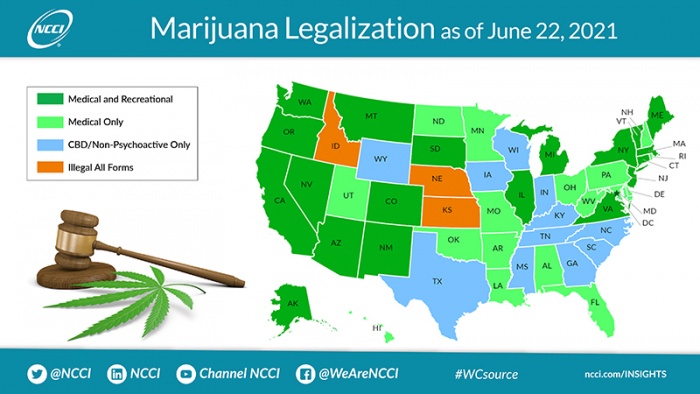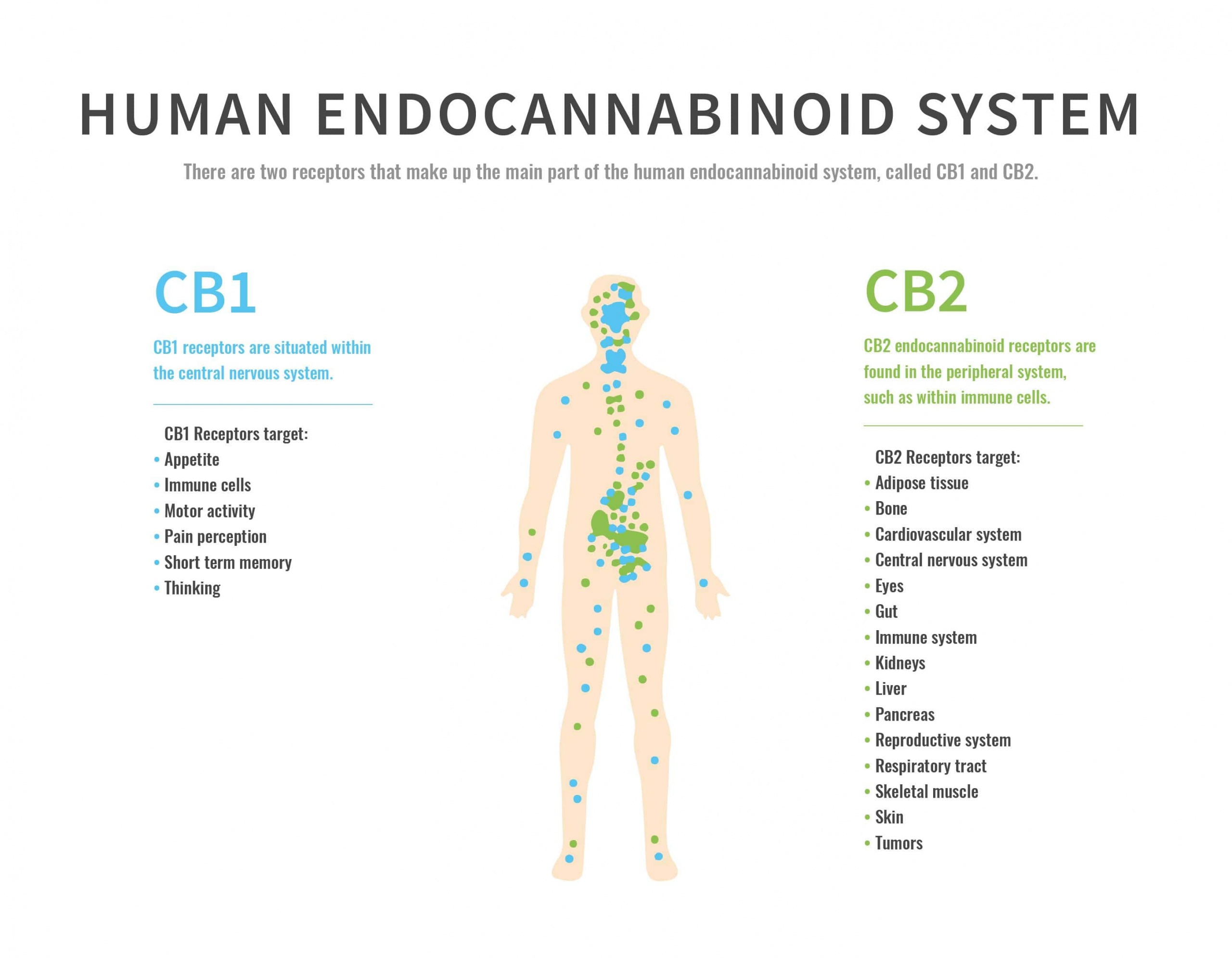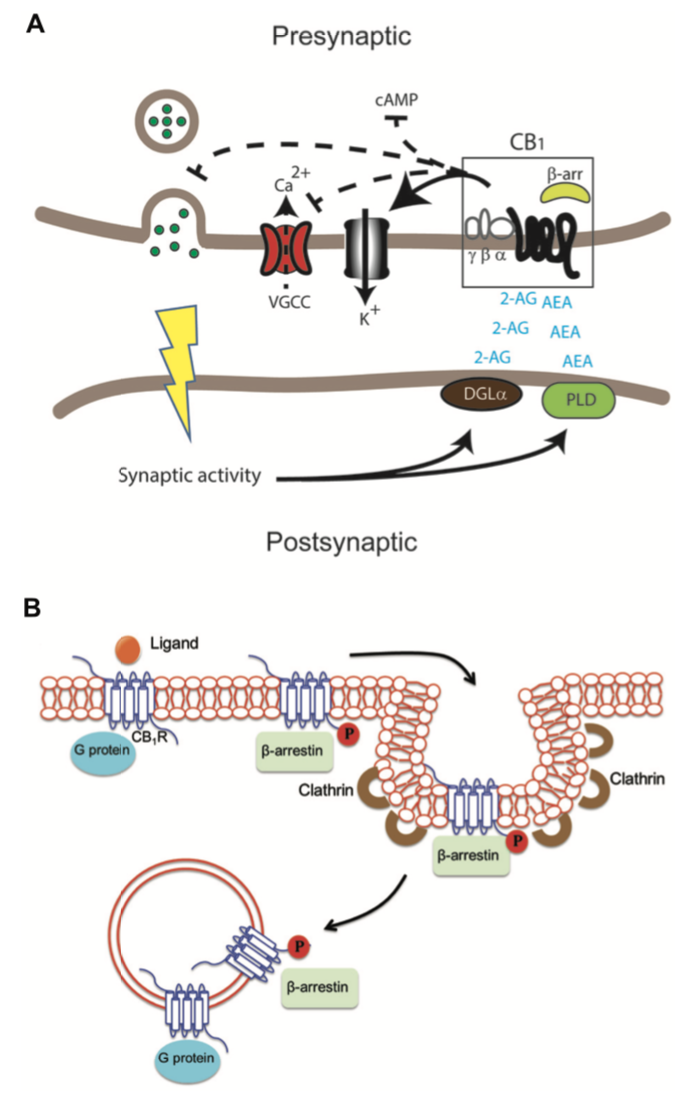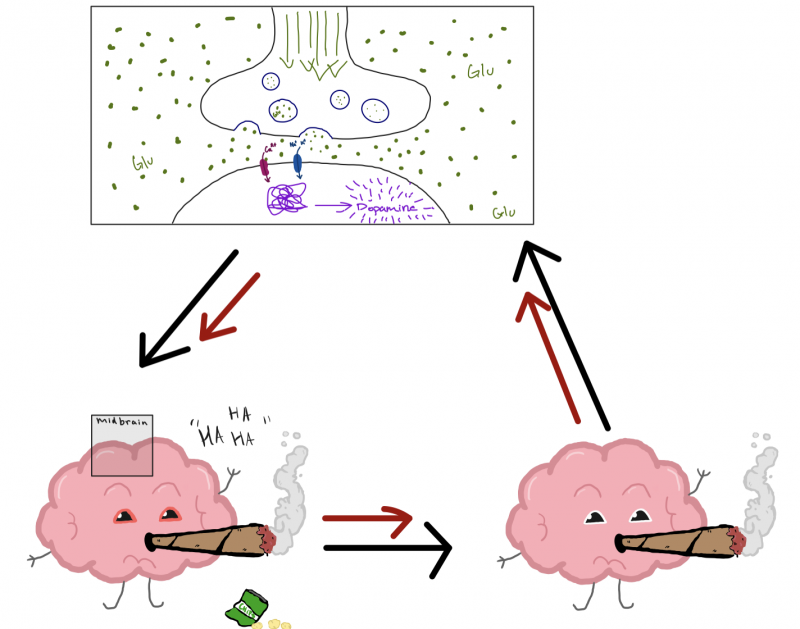Featured Image: The cycle a marijuana addicted brain will enter as the need for more and more weed is required to reach the same “high”. The mechanism is possibly mediated by an increase in go signals (as Glutamate) that increase the synthesis of dopamine (pleasure chemical). Dopamine is one of the chemicals produced that cause the pleasurable emotions associated with marijuana. Artstract by Alison Amundson.
Marijuana Use
18 states have legalized weed and has become the most commonly used federally illegal drug in the United States. Figure 1, shows which states have legalized marijuana and the type of product that is legal. About 18% of Americans have used marijuana at least once. There has been a steady increase of marijuana use in

young adults and adolescents since 2019. In 2017, 24% of 12th-graders had used marijuana in the past year and in 2019, the percentage increased to 35.7%.
With more and more people using marijuana the need to fully understand its mechanisms is becoming increasingly important.
Cannabinoids
Cannabis contains over 500 natural compounds, including cannabinoids, terpenoids, flavonoids, and alkaloids. The primary psychoactive agent is -tetrahydrocannabinol (THC). This ingredient is what has promoted the widespread recreational use of marijuana. THC is defined as a cannabinoid and acts on the endocannabinoid system (ECS) of the brain.
The brain produces its own cannabinoids known as endocannabinoids. Both cannabinoids and endocannabinoids act on cannabinoid (CB) receptors. The primary receptor in the brain is CB1, it is this receptor that mediates the effects of THC. CB2 receptors are predominantly found in peripheral systems of the body, as displayed in Figure 2.

CB1 is expressed in the cortical areas involved in higher cognitive functions, midbrain regions associated with motor control, and hindbrain regions that participate in control of motor and sensory functions of the autonomic nervous system. Therefore, marijuana has the potential to vastly affect the brain in a multiplicity of methods.
CB2 receptors are expressed in the midbrain ventral tegmental area on dopamine neurons. It is postulated this region is where the addictive properties of marijuana are modulated.

THC and the Brain
Figure 3 is a proposed schematic of CB1 receptor activation at the synapse of a neuron. The depth this image provides to CB1 signaling is too vast for such a small blog post. However, it does show that an agonist of CB1, like an endocannabinoid (2-AG or AEA) or a cannabinoid (THC), decreases cAMP activity, inhibits Ca2+ channels, decreases the release of neurotransmitters (such as GABA), and opens K+ channels causing hyperactivity.
Consuming marijuana increases the amounts of agonists available to bind to CB1 receptors. An important note here is THC is only a partial agonist of CB1, thus the mechanism of THC on CB1 is more complicated. THC being a partial agonist lends to the complexity of THC’s effects on the brain and why scientists have not yet figured it out.
An interesting theory suggests that THC lasts longer and is present in greater amounts than our endocannabinoids, thus overwhelming the self-regulating system. THC inhibits the production of GABA, the ‘stop’ signal for dopamine synthesis. Therefore, the ‘go’ signal for dopamine synthesis (glutamate) becomes dominate and dopamine is over-synthesized. Dopamine is associated with pleasure and reward. This mechanism is suggesting that the effects of THC on the brain are due to an increase in dopamine synthesis and release.
Final Points
The precise mechanism of THC, the main psychoactive ingredient of marijuana, is not well defined. Thus, it cannot be definitively stated that marijuana is bad for you. Nevertheless, the widespread increase in marijuana use should not be encouraged until we have a full, clear view on this substance.
References:
https://www.cdc.gov/marijuana/data-statistics.htm
https://drugabusestatistics.org/marijuana-addiction/
https://www.frontiersin.org/articles/10.3389/fncel.2016.00294/full
